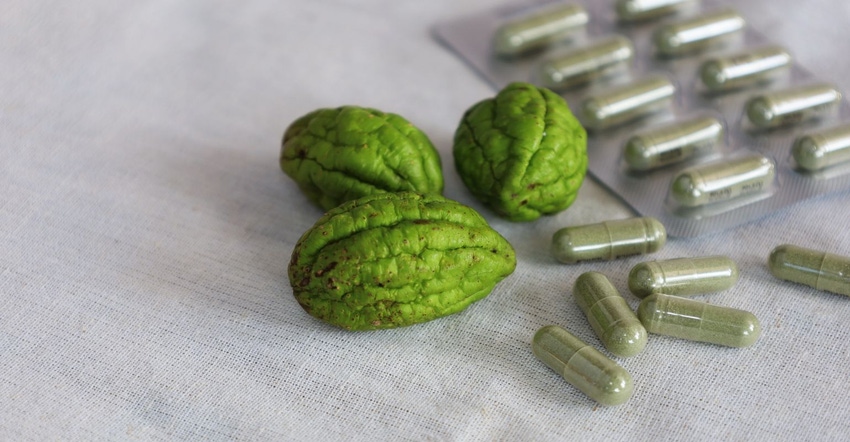Formulators can differentiate bone health formulations with menquinone-7 and milk basic protein, and joint support supplements with cucumber extract and Terminalia chebula.

If you’re a dietary supplement brand owner and don’t already have products in the bone and joint health category, you should seriously consider correcting that oversight. Why? Consider that, in 2022, the global bone and joint health supplements market reached an estimated $11.7 billion, per Research and Markets. Now further consider that it is projected to reach $17.6 billion by 2027, with a compound annual growth rate (CAGR) of 8.5% during the forecast period. Clearly this product category is on a positive trajectory for growth. But what is the reason for the significance of this growth? The answer is osteoporosis and osteoarthritis (OA).
Osteoporosis
According to CDC, between 2017 and 2018, the age-adjusted prevalence of osteoporosis among adults ages 50 and over was 12.6% and was higher among women (19.6%) compared with men (4.4%).
In addition, the prevalence of low bone mass—a precursor of osteoporosis—among the same age group was 43.1% and was higher among women (51.5%) compared with men (33.5%). Furthermore, the annual number of fractures due to osteoporosis is projected to increase from 1.9 million to 3.2 million–or 68%—from 2018 to 2040.
OA
The CDC estimates that 1 in 4 (or 54.4 million) U.S. adults have some form of arthritis, a figure that is projected to reach 78 million by the year 2040 as the population grows and ages. While more than 100 types of arthritis are estimated to exist, OA is the most common form of arthritis, affecting 32.5 million U.S. adults. The high prevalence of arthritis manifests in enormous societal and personal costs.
The relationship between calcium, vitamin D and some other nutrients has been established regarding osteoporosis prevention and treatment, and people often look for nonpharmaceutical interventions—especially dietary supplements—to help with OA. The real question though, is which nutraceuticals should a formulator consider for use in bone and joint health formulas? After all, brands want to stand out from the crowd and be able to differentiate their products. Keep reading for some possibilities.
Bone health nutraceuticals
While calcium and vitamin D are the most common nutraceuticals found in bone support formulas, other nutraceuticals are worth considering. Two are vitamin K2 as menquinone-7 or MK-7, and milk basic protein (MBP).
A specific bone protein known as matrix Gla protein (MGP) is vitamin-K dependent and helps prevent the calcification of soft tissue and cartilage, while facilitating normal bone growth and development. A three-year study was conducted in which 244 healthy postmenopausal women received 180 mcg/day of vitamin K2 as MK-7, or a placebo. The results showed that, compared to placebo, vitamin K2 significantly decreased the age-related decline in bone mineral content and bone mineral density. In addition, bone strength was favorably affected by K2, and a significant decrease in the loss of vertebral height was noted.
Another interesting bone health nutraceutical is MBP, the subject of several studies with women of different age groups, including younger and older women. In each of these studies, only 40 mg of MBP was used—and the results were quite impressive. In young women, MBP effectively increased bone mineral density and improved bone metabolism in only six months. In older women (ages 65-86), MBP combined with exercise helped subjects maintain their bone mineral density and gain an increase in the calcaneal osteosonic index (a measurement for bone structure and skeletal strength). Likewise, in healthy menopausal women, MBP was shown to help prevent bone loss. Other age groups of women were also able to increase their bone mineral density with MBP supplementation.
Joint health nutraceuticals
Glucosamine and chondroitin are the most prevalent nutraceuticals used in joint formulas, but their popularity has been declining due, in part, to the fact that people want to take less pills, not more—and the clinically relevant dose of a glucosamine/chondroitin combination require at least four capsules daily. The fact is, more appealing choices are available, such as cucumber extract and Terminalia chebula.
A water extract of cucumber fruit (as Q-Actin, from IminoTech Inc.) was compared against glucosamine-chondroitin (GC) in a six-month randomized, double-blind, parallel-group clinical trial to evaluate the efficacy in relieving joint pain in 122 OA patients (between the ages of 40 and 75). The cucumber extract group received 20 mg/day, while the GC group received 2,700 mg/day. Results indicated that joint pain decreased by 70.39% in the cucumber extract group, compared to only 33.7% in the GC group. No adverse effect was reported during the trial period, and the researchers concluded the cucumber extract was significantly more effective than GC in promoting joint comfort as well as improving physical function.
The fruit of the Terminalia chebula tree has been extensively used in ayurvedic, Unani and Iranian medicine as a traditional remedy against various human ailments. Studies have also shown it to have value for people with joint pain. In one 12-week, double-blind, placebo-controlled trial, T. chebula fruit extract at 1,000 mg/day (TCE, as AyuFlex, from Kerry), was effective in reducing pain, stiffness and disability. A second randomized, double-blind, placebo-controlled unpublished trial found similar results, but showed that 500 mg/day of TCE was just as effective as 1,000 mg; and also improved perception of low back pain.
Conclusion
Bone and joint health continues to be a trending dietary supplement category. Brand owners should not only consider offering bone and joint health support supplements as part of their line up, but they may also think about using interesting nutraceuticals—such as those presented in this article—to help their products stand out from the crowd.
Editor’s note: To read similar content, click the link to download our free digital magazine, “Strong bones, flexible joints: Nutrients and formulations that maximize musculoskeletal health.”
Gene Bruno, MS, MHS, RH (AHG), is vice president of scientific and regulatory affairs at NutraScience Labs.
About the Author(s)
You May Also Like






.png?width=800&auto=webp&quality=80&disable=upscale)